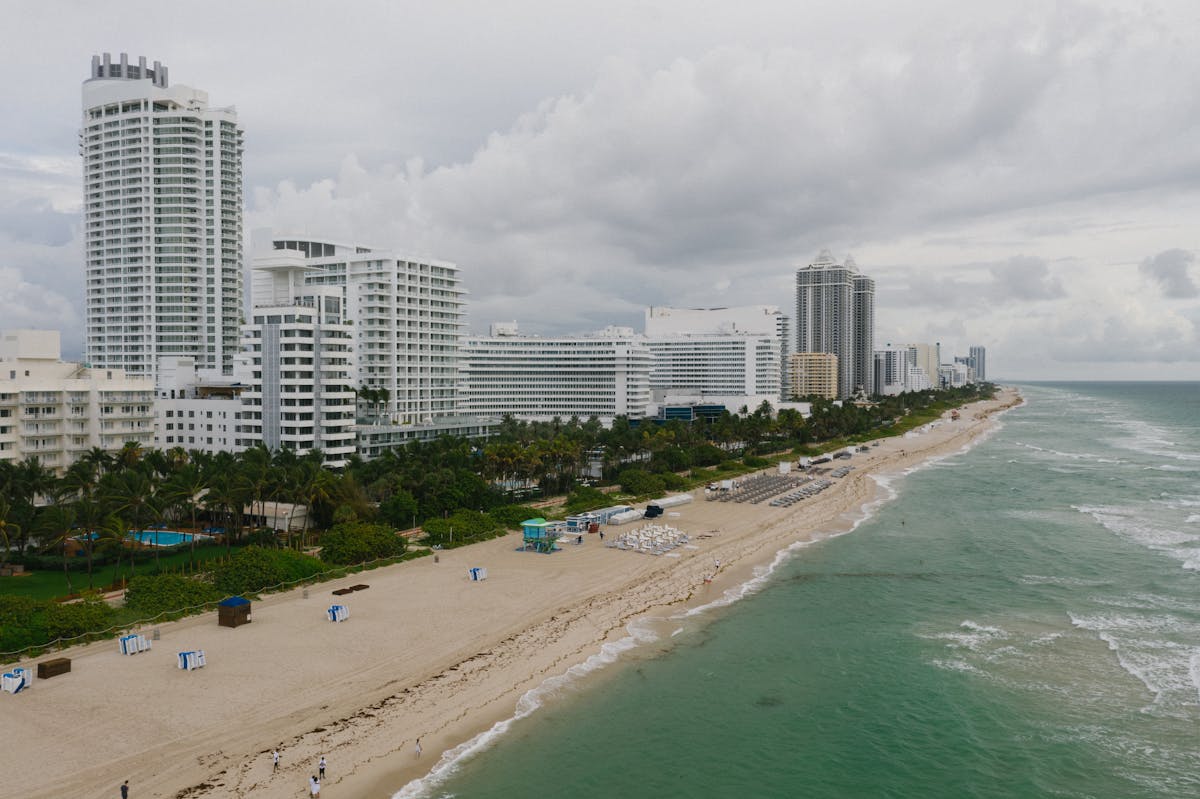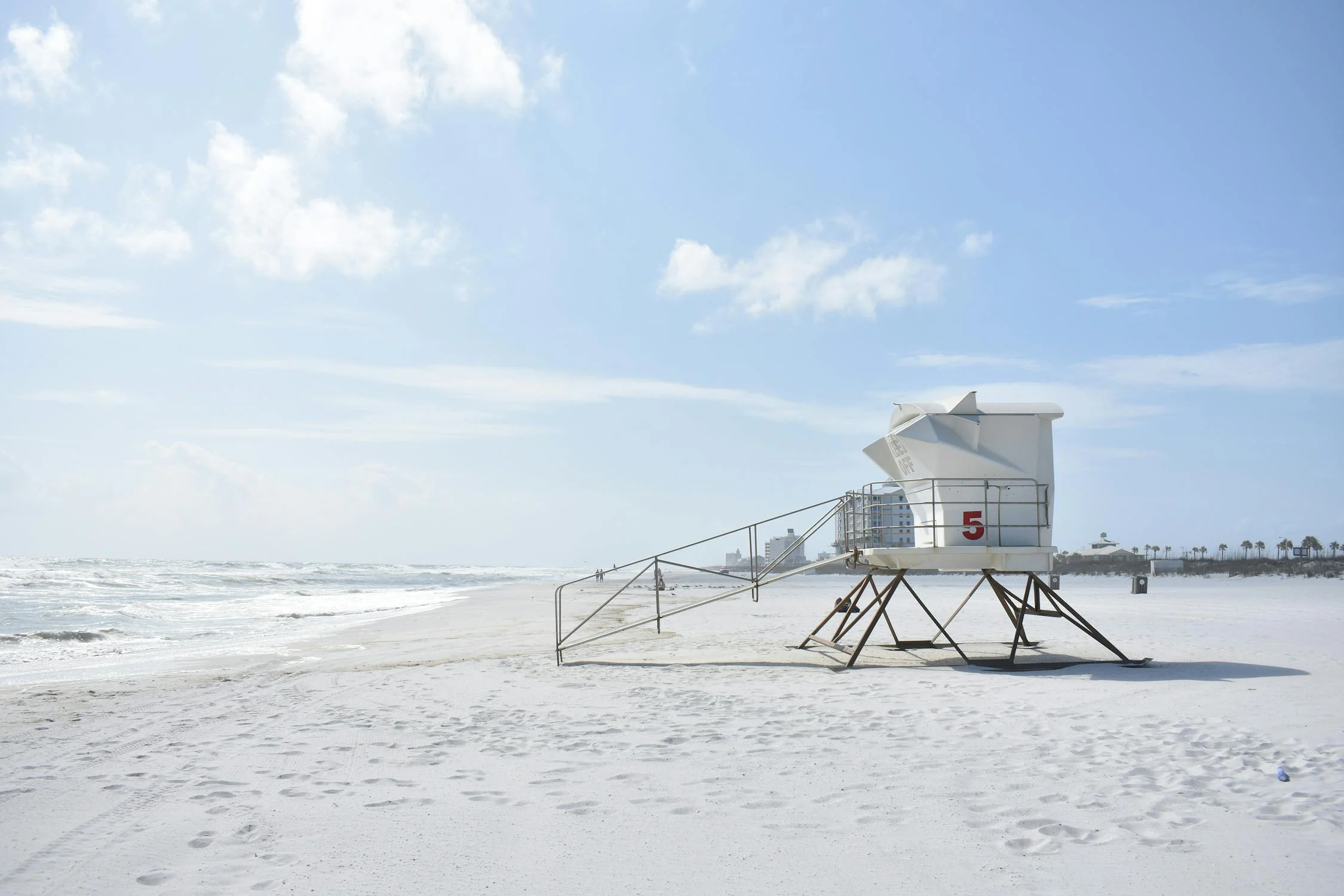Florida Temperature by Month 2024 requires understanding its diverse climate throughout the year. As your guide to exploring the world through travel, culture, history, food, sport, and unique experiences, knowing what weather to expect is crucial for packing right and planning activities. Florida isn’t just one climate; it shifts from subtropical in the south to humid subtropical further north. This guide breaks down the typical temperature patterns month by month in 2024, helping you discover the best time for your perfect Florida adventure.
Understanding the temperature variations across the state is key. South Florida, including Miami and Key West, generally experiences warmer temperatures year-round with less seasonal fluctuation. Central Florida, home to Orlando and Tampa, has distinct seasons with hotter summers and cooler winters. North Florida and the Panhandle, like Pensacola and Tallahassee, see the most significant temperature swings, with colder winters and hot, humid summers, sometimes even experiencing frost. These regional differences mean the “best” month to visit depends heavily on your chosen destination within the state and your tolerance for heat or cool.
Understanding Florida’s Climate & Regional Differences
Florida’s position between the Atlantic Ocean and the Gulf of Mexico profoundly influences its climate. The state experiences a wet season (roughly May through October) and a dry season (roughly November through April). Temperatures vary significantly from north to south. The Panhandle can see winter lows dipping near freezing, while South Florida rarely experiences temperatures below 60°F (15°C). Humidity is a factor nearly year-round, especially during the warmer months, making the “feels like” temperature often higher than the actual reading.
A stage setup, suggesting live performances and entertainment things to see in Orlando Florida

What to Eat in Fort Worth – A Culinary Deep Dive
Discover the Top Restaurants in Denver – A Culinary Journey
Discover Where to Visit in Las Vegas
Knowing these general patterns helps contextualize the monthly temperature breakdowns. While 2024 will have its unique weather events and variations, looking at typical historical averages provides a reliable baseline for planning. Events like El Niño or La Niña can influence rainfall patterns and temperatures, as seen in reports like the one for March 2024, which noted above-average temperatures across much of the state. This highlights the importance of checking forecasts closer to your travel dates, but typical monthly patterns remain a valuable planning tool.
Florida Temperature by Month 2024: A Detailed Breakdown
Let’s dive into what you can typically expect temperature-wise throughout 2024 in Florida, keeping in mind regional nuances and potential year-to-year variations. This will help you choose the ideal month for your specific travel goals, whether it’s enjoying theme parks, relaxing on the beach, or exploring nature.
January 2024
January is generally the coolest month in Florida. North Florida can experience average lows in the 40s°F (4-9°C) and highs in the 60s°F (15-20°C). Central Florida sees lows in the 50s°F (10-15°C) and highs in the 70s°F (21-26°C). South Florida remains mild, with lows in the 60s°F (15-20°C) and highs in the 70s°F (21-26°C). It’s a popular time for visiting theme parks and enjoying outdoor activities in the southern parts of the state without the intense summer heat.
February 2024
February remains cool, similar to January, particularly in North Florida. Temperatures gradually start to warm up as the month progresses. Central and South Florida continue to offer very pleasant weather, ideal for exploring. Average highs typically range from the low 60s°F (15-18°C) in the north to the mid-70s°F (24-26°C) in the south. It’s a great month for festivals and outdoor events before the humidity picks up.
March 2024
March brings a noticeable warming trend across the state, marking the transition from the dry, cooler season to the warmer, wetter season. Temperatures in March 2024 were notably above normal across much of Florida, with departures ranging from +0.7°F in Pensacola to +4.4°F in Orlando, according to climate data. Average highs typically reach the high 60s°F (20-21°C) in the north and the high 70s°F (26-28°C) in the south. This is a prime time for spring break and enjoying beaches statewide before the intense summer heat arrives.

Rainfall in March 2024 was variable, with some areas like South Florida and parts of the Panhandle receiving above-normal rain, while central and east-central Florida were drier. This variability is typical during transitional months.
April 2024
April is often considered one of the most pleasant months in Florida. Temperatures are warm but not yet excessively hot or humid. Average highs climb into the 70s°F (21-26°C) in the north and the low 80s°F (27-29°C) in the south. It’s perfect for swimming, outdoor sports, and exploring natural parks. The risk of significant rain is relatively low compared to the summer months.
May 2024
May sees temperatures continue to rise significantly as Florida transitions fully into its wet season. Humidity levels also begin to climb. Average highs often reach the mid-80s°F (29-31°C) statewide. Afternoon thunderstorms become more common, especially later in the month. While hot, it’s still manageable for beach days and water activities before the peak summer intensity.
June 2024
June marks the official start of hurricane season (June 1 – November 30) and is typically one of the hottest months. Temperatures are high, and humidity is significant, making it feel even warmer. Average highs are generally in the high 80s°F to low 90s°F (31-33°C). Afternoon thunderstorms are a daily occurrence, providing brief but intense downpours and some temporary relief from the heat. This is a good time for indoor attractions or water-based activities.
July 2024
July is usually the hottest month in Florida. Temperatures and humidity remain at their peak, with average highs consistently in the low 90s°F (32-34°C) statewide. The heat index can easily push temperatures into the triple digits. Afternoon thunderstorms are frequent and can be heavy. Early mornings and evenings are the best times for outdoor activities. Air conditioning becomes your best friend.
August 2024
August continues the trend of hot, humid weather similar to July. Temperatures remain high, and afternoon thunderstorms are expected daily. Average highs stay in the low 90s°F (32-34°C). While it’s the peak of summer heat, it’s also when many schools are on break, making it a popular time for family vacations centered around water parks and coastal destinations.
September 2024
September is still very warm and humid, and it falls within the peak of hurricane season. Temperatures remain in the high 80s°F to low 90s°F (31-33°C), but the frequency of intense afternoon thunderstorms might start to slightly decrease towards the end of the month, especially in North Florida. Crowds at attractions can be lower after the summer rush.
October 2024
October brings a welcome change, especially in North and Central Florida, as temperatures begin to cool down. Humidity levels also start to drop, making the weather much more comfortable. Average highs range from the low 80s°F (27-29°C) in the south to the high 70s°F (25-26°C) in the north. This is a fantastic month for exploring outdoors, attending fall festivals, and enjoying pleasant evenings.
November 2024
November sees a significant cooling trend across the state, bringing crisp, dry air, particularly in the northern and central regions. South Florida remains warm but less humid. Average highs are in the low to mid-70s°F (22-25°C) across much of the state. It’s an ideal time for outdoor activities, hiking, and enjoying the state’s natural beauty before the busier winter holiday season.
December 2024
December is one of the coolest months, similar to January and February. North Florida can experience chilly days and cold nights, sometimes requiring warmer layers. Central and South Florida offer very comfortable, mild weather perfect for holiday travel and escaping colder climates. Average highs range from the mid-60s°F (18-20°C) in the north to the mid-70s°F (24-26°C) in the south. It’s a popular time for snowbirds and holiday events.
Beyond Temperature: What Else to Consider When Visiting Florida in 2024
While temperature is a primary factor, Florida’s climate involves more than just how hot or cold it is. Understanding rainfall patterns, humidity, and the potential for severe weather adds another layer to planning your 2024 trip. This is where the rich tapestry of Florida’s nature and environment intersects with your travel experience.
Humidity and Rainfall Patterns
Florida’s humidity is high year-round but peaks during the summer wet season (May-October). This is when daily afternoon thunderstorms are common. While they are usually brief, they can be intense. The dry season (November-April) is less humid and sees significantly less rainfall, making these months often preferred for outdoor activities away from the coast. As noted in the March 2024 report, precipitation can vary regionally, but the overall seasonal pattern holds true.
Hurricane Season
Florida is prone to tropical cyclones. The official Atlantic hurricane season runs from June 1st to November 30th. While a direct hit is never guaranteed, this period sees an increased risk of tropical storms and hurricanes, particularly from August through October. Forecasts, like the one from Colorado State University for 2024 predicting a potentially active season due to factors like warm ocean temperatures, are something to be aware of. If traveling during hurricane season, it’s crucial to monitor weather forecasts and have travel insurance. Planning during the drier, cooler months avoids this risk entirely.
Best Time to Visit Based on Your Interests
Considering temperature, humidity, rain, and potential weather hazards helps determine the best time for your trip.
- For Theme Parks: The cooler, drier months (January-April, late October-December) offer pleasant temperatures but can have higher crowds and prices, especially during holidays and spring break. May and September offer slightly fewer crowds but come with heat, humidity, and storm risk.
- For Beaches & Water Sports: Spring (April-May) and Fall (October-November) offer warm water and pleasant air temperatures. Summer (June-August) has the hottest temperatures, ideal for swimming and water parks, but also daily rain and peak humidity. Winter water temperatures are cooler, especially in North Florida.
- For Outdoor Exploration (Hiking, Biking, Wildlife): The dry season (November-April) is ideal, offering comfortable temperatures and lower humidity. The Florida Trail and state parks are best explored during these months.
- For Budget Travelers: Summer (June-August) and the shoulder seasons (May, September) can sometimes offer lower prices, though heat and weather risks are higher. Avoid major holidays and school breaks for better deals.
Local Events and Activities
Florida hosts numerous events throughout the year, from music festivals and food fairs to major sporting events like spring training baseball, motorsports, and golf tournaments. Checking local event calendars for your specific destination can help time your visit. For instance, linking climate to culture, cooler months are perfect for exploring historic districts on foot, while summer heat might steer you towards air-conditioned museums or aquatic centers. This connects the climate data directly to the rich travel experiences the persona represents.
Packing Tips for Florida Weather
Packing for Florida requires being prepared for warmth and potential rain, regardless of the month, but with adjustments based on the season.
- Cooler Months (Nov-April): Layers are essential, especially for North Florida. Bring light jackets, sweaters, long pants, along with lighter clothing for warmer days.
- Warmer Months (May-Oct): Focus on light, breathable clothing like cotton and linen. Shorts, t-shirts, swimwear, and a wide-brimmed hat are must-haves. Always pack a light rain jacket or umbrella for afternoon showers.
- General Items: Sunscreen (high SPF!), comfortable walking shoes, insect repellent (especially for nature areas), and a reusable water bottle are recommended year-round.

While drought conditions in March 2024 were minimal, according to the U.S. Drought Monitor, water levels like that of Lake Okeechobee are constantly managed and influenced by rainfall patterns, which can subtly impact local ecosystems and water-based recreational activities depending on the time of year and specific conditions.
Conclusion
Navigating Florida’s diverse temperatures and climate patterns month by month in 2024 is key to a fulfilling travel experience. From the mild, pleasant winters perfect for exploring the Everglades to the hot, vibrant summers ideal for theme park thrills and beach days, each season offers a unique facet of the Sunshine State. By understanding the typical weather patterns, you can pack appropriately, plan activities that suit the climate, and make the most of your journey. Remember that actual conditions can vary, so keep an eye on forecasts closer to your trip. Armed with this knowledge, you’re ready to discover the incredible blend of nature, culture, history, and experiences that Florida offers year-round.

